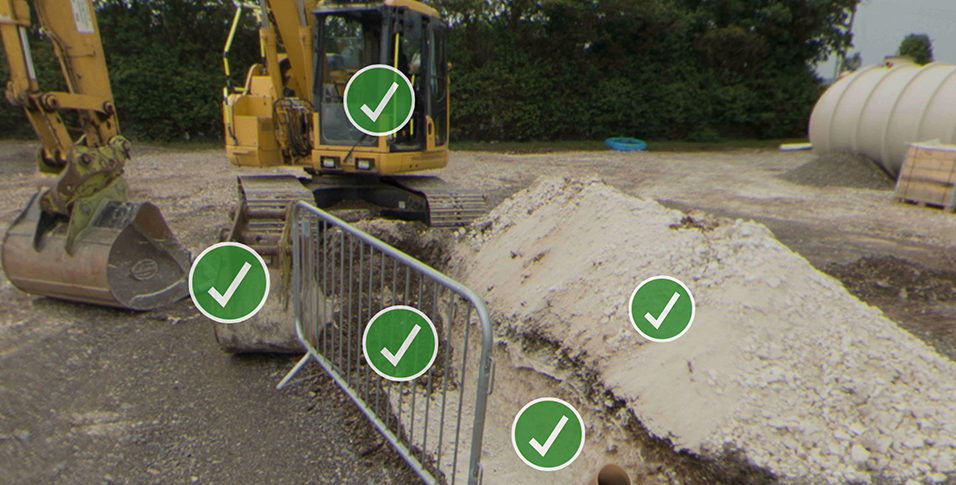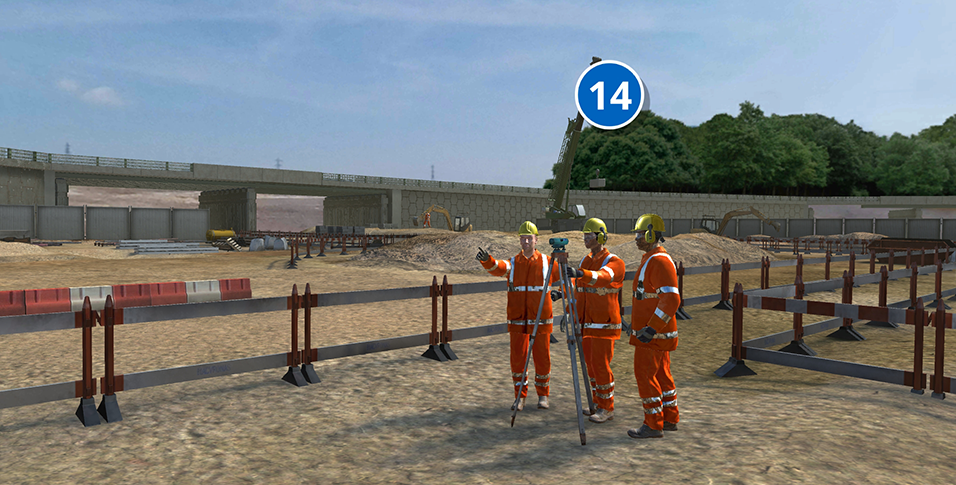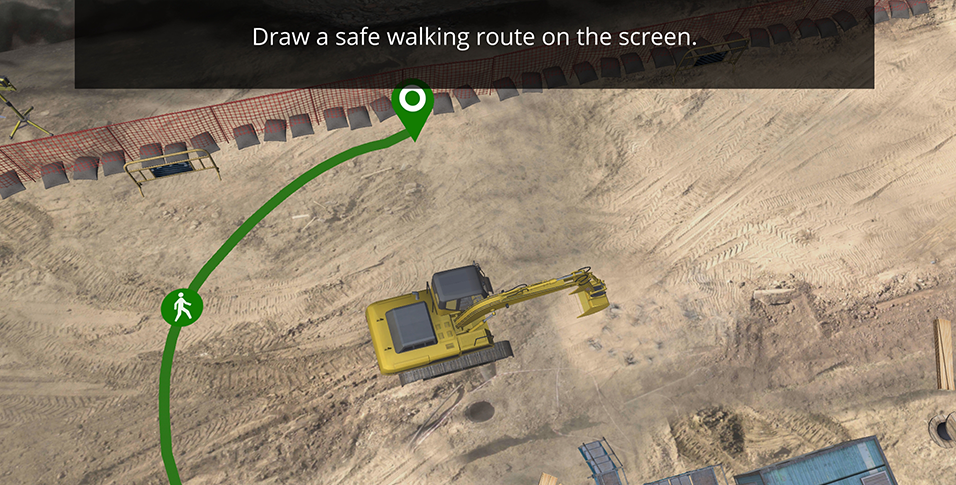Inducting workers onto highways construction sites is time consuming and repetitive for those who work for short periods on multiple sites.
Attention and engagement levels are therefore low with language often a barrier to non-native English speakers.
As part of their repair work on the M5 Oldbury flyover, BAM Nuttall had introduced a sequence of printed wall board material that was used to engage inductees.
Our challenge was to take induction content one step further by digitising it, incorporating Augmented Reality and finding an engaging way to encourage people into the industry.
Finding ways to engage and encourage people into the construction industry is an ongoing challenge.
In September 2017 the Construction Industry Training Board (CITB) published research on the value, opportunities and barriers of immersive learning adoption in construction training. Their research found that immersive learning can help address a range of challenges in the following ways:
In early 2019, following the research, the CITB approved funding for a number of benchmark projects that use immersive technologies with the intention of piloting and measuring their effectiveness. Inducting people onto Highways projects project was one of those funded by the CITB and delivered using match funding in partnership with BAM Nuttall.
The objective was to blend existing behavioural induction training for up to twenty people with new immersive learning content. We were aiming to enthuse industry through engagement of workers and potential employees, whilst helping reduce induction time, improve memory retention and behaviour.
As there are a number of software components, the overall solution involved a range of different hardware components that included:
To deliver the classroom induction training, we built a pair of tablet applications one for the instructor and the other for inductees. The trainees app included new 3D content, 360 imagery, serious games and interactive quizzes. Twenty student tablets were provided along with one instructor tablet connected to a central PC that handled the networking and synchronisation.
Provided in four languages (English, Punjabi, Polish and Slovakian) the content was designed to complement the existing induction material.
H&S and behavioural induction topics covered themes such as:
As a networked experience, the instructor application provided the ability to start and stop exercises and monitor progress by each individual inductee.
At the end of the induction, the student is required to undertake an assessment during which they are presented with a range of situations with multiple choice questions.
Complementing the classroom application we derived a refresher app containing the core content and deployed to the Apple App Store and Google Play stores.
Virtual Reality games very much attract attention amongst the digitally native younger generations. To help encourage school leavers into construction, we developed a blended, symmetrical VR serious game where one user, wearing a VR headset, is guided by their team mates ‘out side’ of VR.
Promoting team work and engineering problem solving, the challenge was for the non-VR team to solve puzzles and guide the VR user through a series of tasks to build a virtual bridge.
The original intention for all CITB funded immersive projects, was to implement new training solutions and then measure their impact over a twenty four month timeframe.
With 2019 being the year of delivery, 2020 will be the year of piloting and measurement for the classroom and refresher applications.
Through 2020 BAM Nuttall will be piloting the applications and tracking the impact with a view to contributing to the final CITB report due early 2021.
The blended suite of onboarding training applications has been shorted as finalist in two Learning Technologies Awards 2020 categories: Best Technology-based Onboarding Programme and Best Use of Blended Learning (UK Commercial Sector). On November 18th 2020, it was awarded bronze prize for ‘Best Technology-based Onboarding Programme’





We’re always happy to talk to you about how immersive technologies can engage your employees and customers. If you have a learning objective in mind, or simply want to know more about emerging technologies like VR, AR, or AI, send us a message and we’ll get back to you as soon as we can.